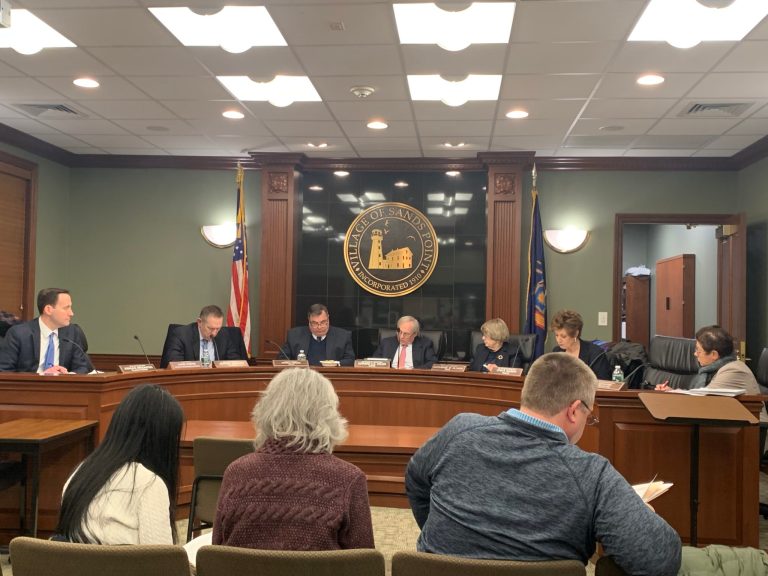
Sands Point Water Commissioner Dan Scheyer said at the village Board of Trustees meeting on Tuesday night that construction is continuing on a monitoring well to test levels of water pollutants.
“We just completed the construction of the monitoring well, which is down the waterfront near the Maven property, and we’re beginning the construction, now, of the test well,” he said.
According to Scheyer, construction of the test well will take about five weeks to complete and requires digging through more than 450 feet of bedrock.
Once construction on the test well is complete, the village plans to pump the water and see what effect it will have on the chloride level in the monitoring well.
“This is a big project,” Scheyer said. “When we get through with these tests, we will find out whether or not we have something that’s viable.”
Water consumption is critical across Long Island, particularly in the Village of Sands Point where, according to Mayor Edward Adler, there are currently six wells in operation.
“We need all of our wells at peak times,” Adler said, which he said was the reason village officials applied to the state Department of Environmental Conservation more than three years ago to build two new wells just off of the golf course on village club property.
As far as the immediate neighbors are concerned, Scheyer said that a letter has been sent to each resident explaining that the village has been looking for an appropriate location to build a well for half a decade and it took the state DEC three years to approve it.
During the meeting, the board also addressed a recent $18 million grant provided by the state which will allow the Port Washington Water District to pay off a portion of a $16.1 million bond issued for the construction of three new treatment facilities.
The new facilities will include the installation of a new treatment technology called Advanced Oxidation Process (AOP), the only approved method to remove 1,4-dioxane and any potential treatment byproducts from the drinking water.
“We don’t have a dioxane problem but we are coming close on two wells with PFAs,” Scheyer added. “We’re at eight and the cut off number is 10.”
According to the Environmental Protection Agency, PFAs are man-made chemicals that have been manufactured and used in industries around the globe. These chemicals are very persistent in the environment and the human body, meaning they do not break down and can accumulate over time, leading to adverse health effects.
Scheyer estimates that the cost of remediation per well will be $2 million to $3 million each, with the focus strictly centered around the two wells with high levels of per- and polyfluoroalkyl substances.
The Village of Sands Point Board of Trustees is next scheduled to meet on Tuesday, Feb. 25 at 8 p.m.






